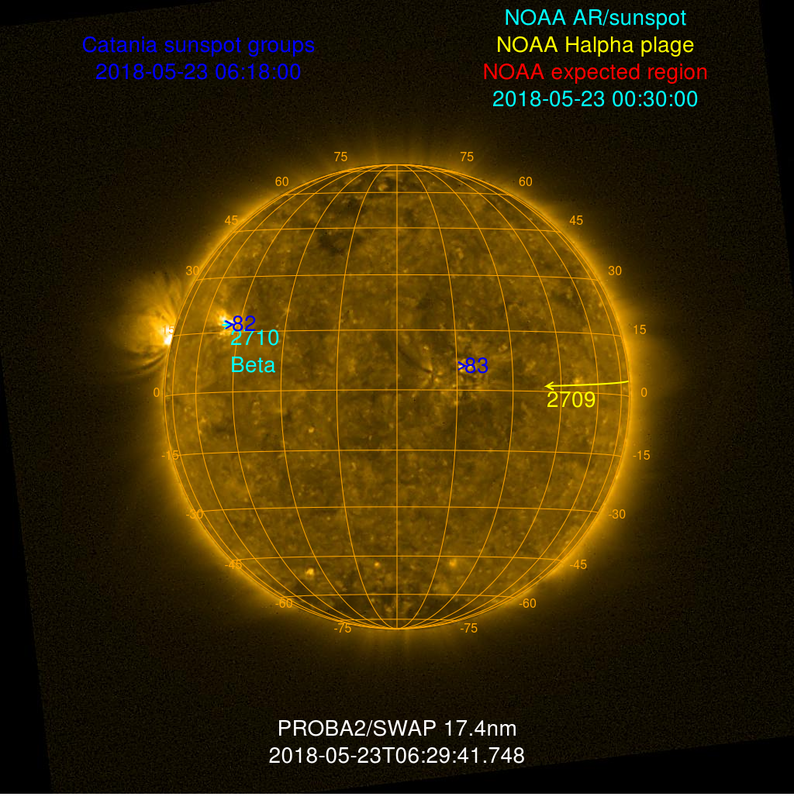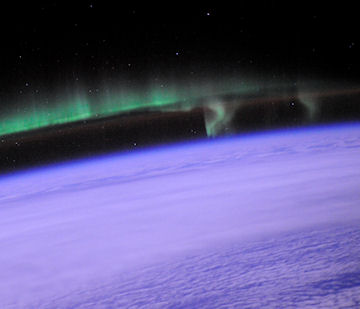|
|
Post by andrewuwe on Aug 19, 2010 8:07:33 GMT
The sun is blank?
|
|
|
|
Post by kerogre256 on Aug 19, 2010 10:55:25 GMT
'The sun is blank? ' no there is 23 invisible spots.
|
|
jinki
Level 3 Rank
  
Posts: 123
|
Post by jinki on Aug 19, 2010 14:42:54 GMT
'The sun is blank? ' no there is 23 invisible spots. Yes, as some would have us believe. In reality we have returning regions that have run out of steam. |
|
|
|
Post by jcarels on Aug 19, 2010 16:55:30 GMT
The sunspot number on spaceweather is from yesterday. Today's number will be 11 (or lower but not 0)
|
|
|
|
Post by Kevin VE3EN on Aug 19, 2010 17:18:40 GMT
lowest sunspot number for a day can either be 0 or 11 , nothing in between.
Today should be 11 based on the single speck remaining in Region 1100
|
|
|
|
Post by lsvalgaard on Aug 19, 2010 17:35:47 GMT
lowest sunspot number for a day can either be 0 or 11 , nothing in between. Today should be 11 based on the single speck remaining in Region 1100 Agree. Rudolf Wolf would have counted it for a Wolf number of Rw = 10*1 + 1 = 11 |
|
|
|
Post by jcarels on Aug 19, 2010 18:40:19 GMT
I also agree with this and reported R=11 after my observation.
But today's estimated ISN = 7. Because of the reduction factor k the smallest Wolf number which differs from 0 is 7 and not R = 11.
|
|
|
|
Post by lsvalgaard on Aug 19, 2010 18:54:51 GMT
I also agree with this and reported R=11 after my observation. But today's estimated ISN = 7. Because of the reduction factor k the smallest Wolf number which differs from 0 is 7 and not R = 11. The problem of course is that the 0.6 factor does not apply to the smallest sunspot numbers, i.e. the reduction is not linear. Wolfer remarks on this but decided that on a yearly basis the problem is not large. This is, of course, only true as long as the yearly number is not as small as it has been this past minimum. This whole subject is a can of worms, and all kinds of silly ideas abound around this. I do think that it is possible to correct this defect by analysis of the original Wolf numbers [working on it]. |
|
|
|
Post by france on Aug 19, 2010 20:20:51 GMT
but CATANIA which gives the ssn shows 2 sunspot on the picture today 1098 and 1100, (and more1097 and 1094) so    |
|
|
|
Post by lsvalgaard on Aug 19, 2010 20:32:00 GMT
|
|
|
|
Post by annav on Aug 20, 2010 4:41:55 GMT
Now, 4:41 Greenwich, there is only the pixel at 4 o'clock
|
|
|
|
Post by andrewuwe on Aug 20, 2010 6:53:09 GMT
I had good visibility, but I could easily have missed that one. My eyesight is not what it used to be and I can't check again due to cloud. What do you call those black specks that float around in your eyes? Oh yeah floaters.
My floaters are bigger than most sunspots. ;D
|
|
|
|
Post by france on Aug 20, 2010 18:48:19 GMT
Thank you Dr S. I thought Catania was the royal observatory in Belgium Did you see the aurora on spaceweather today ? On August 13th a minor solar wind stream hit Earth's magnetic field. The impact did not trigger widespread displays of auroras on Earth, but the view from orbit was sublime:  |
|
n3eg
New Member

Posts: 9
|
Post by n3eg on Aug 20, 2010 20:02:47 GMT
A question about the future... Imagine that some day we have satellites behind the sun which record solar flux and let us view sunspots on the back side. Do you think it would give us numbers that would show a "smoother" view of the sunspot cycle, or would we still have the large variations over every few months? Or a simpler version - does overall solar activity really vary this much, or are the spots just hiding on the wrong side? We already have [had to be precise, because they move] space craft that can view the far side: stereo-ssc.nascom.nasa.gov/beacon/beacon_secchi.shtml shows a view of the almost the entire solar surface. The large variations from month to month [day to day, even] are just the way the Sun is. My question was: Would we see more stable indications of solar activity (especially in this up-and-down point in the solar cycle) if we were measuring sunspots on the far side? Yes, we have STEREO images, but can anyone observe spots on the far side from our current satellites? Don't get me wrong here - I'm not trying to say we need to count 360 degrees of spots, divide by two, and screw up comparisons with historical records. I'm just saying that only keeping track the Earth-facing side gives us a pessimistic and one-sided view (pun intended) of the solar cycle. For example, look at the sun today. All the activity is on the back side. Solar flux might be 5 points higher there than here, and the sunspot number might also be higher. Instead, we officially see a dip in solar activity for another week or two, possibly longer if the sunspots decay while coming around the east side. |
|
|
|
Post by af4ex on Aug 20, 2010 23:54:20 GMT
Thought Experiment:
Let's say there is another planet (Planet X) travelling in the Earth's orbit but always separated by 180 degrees, so that X is hidden from our view, on the other side of the Sun. Also let's assume that the solar astronomers on Planet X just happen to use the same methods as we do to measure solar activity (sunspot number, flux etc).
So your question is equivalent to the following: "Do the solar activity readings on Planet X differ from the Earth's readings?"
There is no reason to believe that the readings would be biased substantially in either way. On average, we would see tha same activity as X. For every sunspot that was only visible to X it is equally likely that we might see a spot hidden from X.
John/af4ex
|
|